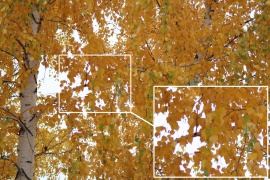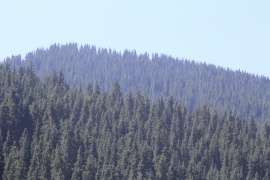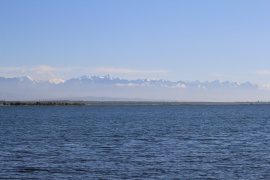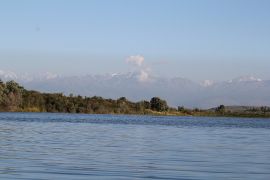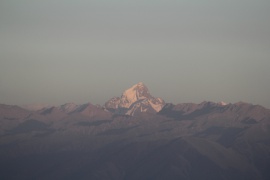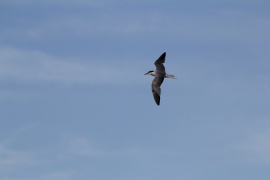Sigma AF 70-300mm f/4-5.6 DG MACRO
Nikon F
Sony Minolta A
Sigma AF 70-300mm f/4-5.6 DG MACRO — budget zoom lens with variable focal length for Canon, Nikon and Sony digital single-lens reflex cameras. Special mount is made for each of these type of cameras, but technical characteristics of the lens are the same.
Feel free to post your messages, edits, questions, additional information related to the lens at the discussion page of the article.
Lens usage
This lens is great for shooting distant objects, portraits, and semi-portraits, as well as doing some macro photography. The Sigma AF 70-300mm lens is recommended especially for those just starting to learn professional photography.
Advantages
The main advantages of this lens can be attributed to the following:
- Sharp photos with good quality and color fidelity for a budget lens.
- The maximum focal length (300 mm.) of the lens allows you to photograph distant objects, as well as distant small objects (e.g. birds, small animals).
- The metal bayonet makes the camera mounting construction reliable and durable.
- Macro mode, which allows relatively small-scale shooting of details of an object.
- The weight of the lens is a relatively acceptable weight for a telephoto lens, which allows it to be taken on long and difficult hikes.
Disadvantages
The drawbacks of the lens can include the following:
- Slow autofocus in dim lighting.
- Inability to photograph in small spaces - the focal length does not allow for wide shots in closed spaces.
- Chromatic aberration effect when shooting at long focal lengths (using zoom) is quite noticeable.
- No zoom lock on the lens, which would allow you to keep the focal length fixed at a certain value and prevent the lens from extending when walking.
- Darkening of photos at maximum zoom (300mm). Sometimes it is necessary to make light correction of photos in Photoshop.
Lens characteristics
Lens focal length
The minimum focal distance of this lens is 70mm, which allows for good portrait photography. Nature shots look particularly great, giving the background a very beautiful bokeh, while the subject is sharp. The maximum focal distance of 300mm allows for distant objects to be photographed with good detail. It should be noted that Sigma AF 70-300mm is not ideal for photographing small, moving objects at a distance, being only satisfactory. Despite this, sports events and other rapidly moving, large objects at a distance can be photographed well. At the maximum focal distance of 250-300mm, macro photography can be done with good detail. Examples of photos can be seen in the gallery.
Lens focusing
The lens focus can be assessed as satisfactory but still acceptable for this budget lens. At minimum focus distance (70-100 mm) auto-focus works fairly quickly, but when using the magnifying function at maximum focus distance (200-300 mm) auto-focus works significantly slower, especially in low light or with moving subjects, such as when photographing sports events or other moving objects. Thus, one needs to take a dozen photos to select an acceptable, quality, sharp photograph. However, this is quite acceptable for such a budget lens, and one can easily take quality photographs, both close and far from the objects being photographed. Quality of photos can be seen in the gallery of photo examples.
Lens chromatic aberrations
Chromatic aberrations (bluish haloing around objects) may be present to some degree with any budget lens. This lens may show strong effects when used at its maximum focal length of 200-300mm, or when using magnification, as well as when there is high contrast between the subject and background. However, such effects can easily be retouched in photo editing programs. Below are examples of the worst cases of chromatic aberrations from this lens, which may be present under certain conditions.
-
Sigma AF 70-300mm chromatic aberration sample
-
Sigma AF 70-300mm chromatic aberration sample
-
Original image with the effect
-
Original image with the effect
Bokeh of the Lens
Bokeh refers to the quality of the blurred background in a photo when focusing on a subject. This effect is most noticeable with a wide-open aperture. The maximum aperture of this lens is f/4, but as you zoom in, the aperture increases, making the background blurrier. The Sigma AF 70-300mm lens delivers decent bokeh, especially in macro photography and when shooting full-frame subjects. Check the photo gallery for examples.
Sharpness of the Lens
The sharpness is quite acceptable, rating around a solid four out of five. However, when using zoom, sharpness may decrease due to the aperture changes.
Lens macro shooting
A key feature of this lens is its dedicated macro mode, which reduces the minimum focusing distance. This allows for close-up shots with zoom, making the lens function somewhat like a microscope. While the Sigma AF 70-300mm cannot match dedicated macro lenses, it still produces good results. For the best image quality, using a tripod is recommended.
-
Focal length 300mm; f/8; exposure 1/640 sec.; ISO 640
-
Focal length 190mm; f/7,1; exposure 1/500 sec.; ISO 100
-
Cropped image 1920х1280 from original photo
-
Focal length 300mm; f/7,1; exposure 1/400 sec.; ISO 100
-
Focal length 300mm; f/7,1; exposure 1/500 sec.; ISO 100
-
Focal length 300mm; f/6,3; exposure 1/320 sec.; ISO 200
Lens sample images
-
General panorama
-
Shooting with zoom
-
Landscape photography
-
Panorama
-
Maximum zoom
-
Standard panorama
-
Sports Zoom
-
General frame
-
Shooting distant objects
-
Panorama shot
-
Maximum zoom
-
Maximum zoom
-
Portrait photography
All these photographs were taken with a Canon 60D camera.
Conclusion
The Sigma AF 70-300mm lens is an excellent choice for photography enthusiasts and beginners alike. In skilled hands, it delivers quite impressive results. It is worth noting that the price-to-quality ratio is fully justified. You can evaluate the lens yourself based on the provided photos in the gallery. We would be happy to receive your messages and answer any questions about using the lens in the dedicated discussion page.



